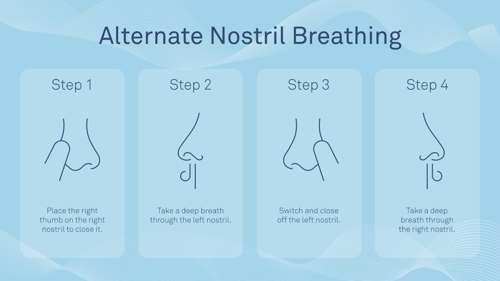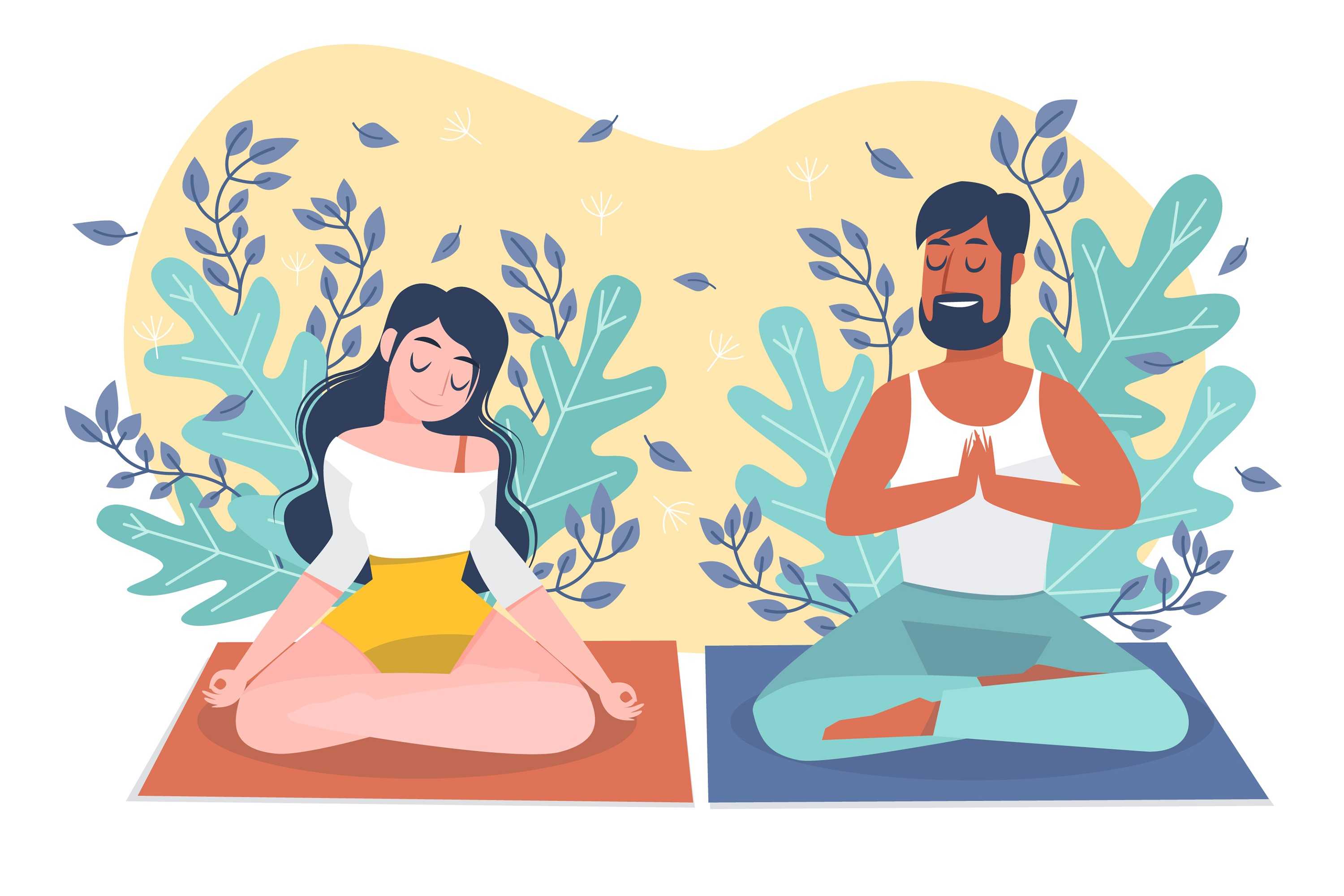Breathing is one of the most fundamental actions we do every day, yet we rarely give it much thought. Most of us breathe without even realizing it, taking shallow breaths and not fully utilizing our lungs. However, did you know that the way we breathe can have a profound impact on our health and well-being? Slow breathing techniques, in particular, have been shown to have numerous benefits, including reducing stress and anxiety, improving sleep, and even lowering blood pressure. In this blog, we will explore the science behind slow breathing techniques and how they can help you lead a healthier, happier life.
The Science Behind Slow Breathing Techniques
Breathing is controlled by the autonomic nervous system, which regulates involuntary bodily functions such as heart rate, digestion, and breathing. The autonomic nervous system is divided into two branches: the sympathetic nervous system, which is responsible for the "fight or flight" response, and the parasympathetic nervous system, which is responsible for the "rest and digest" response. When we are stressed or anxious, our sympathetic nervous system is activated, leading to increased heart rate, rapid breathing, and other physical symptoms. Slow breathing techniques activate the parasympathetic nervous system, promoting relaxation and reducing stress.
One of the most popular slow breathing techniques is diaphragmatic breathing, also known as belly breathing. This technique involves breathing deeply into the lower part of the lungs, using the diaphragm muscle to expand the belly. Diaphragmatic breathing has been shown to reduce anxiety and improve overall well-being. Another popular technique is box breathing, which involves inhaling for a count of four, holding for a count of four, exhaling for a count of four, and holding for a count of four. This technique has been used by the military and first responders to help manage stress and anxiety in high-pressure situations.
Here are some popular breathing techniques:
-
Diaphragmatic Breathing (Belly Breathing)
Diaphragmatic breathing, also known as belly breathing or abdominal breathing, is a technique that involves taking deep breaths into the lower part of the lungs using the diaphragm muscle. This technique is commonly used in practices such as yoga, meditation, and mindfulness to promote relaxation, reduce stress and anxiety, and improve overall well-being.

Diaphragmatic Breathing To practice diaphragmatic breathing, start by finding a comfortable seated or lying position. Place one hand on your chest and the other on your belly. Inhale deeply through your nose, allowing your belly to expand and rise. Exhale slowly through your mouth, letting your belly fall inward. Continue to breathe in this way, focusing on the movement of your belly rather than your chest. Practice for 5-10 minutes at a time, several times a day, to reap the benefits of this technique.
-
Box Breathing
Box breathing, also known as square breathing, is a technique that involves inhaling for a count of four, holding for a count of four, exhaling for a count of four, and holding for a count of four. This technique can be useful for reducing stress and anxiety, improving focus and concentration, and promoting relaxation.

Box Breathing To practice box breathing, find a comfortable seated or lying position. Inhale deeply through your nose for a count of four, holding the breath for a count of four. Exhale slowly through your mouth for a count of four, holding the breath out for a count of four. Repeat for several rounds, focusing on the count of four for each inhale, hold, exhale, and hold.
-
Alternate Nostril Breathing
Alternate nostril breathing, also known as Nadi Shodhana Pranayama, is a technique that involves breathing in through one nostril, holding the breath, and then exhaling through the other nostril. This technique is commonly used in yoga and meditation to balance the body and mind, reduce stress and anxiety, and improve overall well-being.

Alternate Nostril Breathing To practice alternate nostril breathing, find a comfortable seated position. Close your right nostril with your right thumb, and inhale deeply through your left nostril. Hold your breath, and then close your left nostril with your right ring finger, and exhale through your right nostril. Inhale through your right nostril, hold, and then exhale through your left nostril. Continue to alternate nostrils for several rounds, focusing on the breath and the movement of air through each nostril.
-
Kapalbhati Breathing
Kapalbhati breathing is a technique that involves taking short, rapid breaths while forcefully exhaling. This technique is commonly used in yoga to cleanse the body, increase energy, and promote overall health and well-being.

Kapalbhati Breathing To practice Kapalbhati breathing, sit in a comfortable cross-legged position with your hands on your knees. Take a deep inhale, and then forcefully exhale through your nose, contracting your abdominal muscles. Allow your inhale to happen passively, as your belly expands. Continue to breathe in this way, focusing on the movement of your belly and the forceful exhalation. Practice for several minutes at a time, gradually increasing the duration over time.
-
Ujjayi Breathing
Ujjayi breathing, also known as ocean breath, is a technique that involves inhaling and exhaling through the nose while constricting the back of the throat to create a whispering sound. This technique is commonly used in yoga to promote relaxation, improve focus and concentration, and enhance overall well-being.

Ujjayi Breathing To practice Ujjayi breathing, find a comfortable seated or lying position. Inhale deeply through your nose, constrict the back of your throat to create a whispering sound. Exhale slowly through your nose, continuing to constrict the back of your throat to create the same sound. Continue to breathe in this way, focusing on the sound and the movement of your breath in and out of your body.
-
4-7-8 Breathing
4-7-8 breathing, also known as relaxing breath, is a technique that involves inhaling for a count of four, holding the breath for a count of seven, and exhaling for a count of eight. This technique is commonly used to reduce stress and anxiety, promote relaxation, and improve overall well-being.

4-7-8 Breathing To practice 4-7-8 breathing, find a comfortable seated or lying position. Inhale deeply through your nose for a count of four. Hold your breath for a count of seven. Exhale slowly through your mouth for a count of eight. Repeat for several rounds, focusing on the count of four, seven, and eight for each inhale, hold, and exhale.
-
Lion's Breath
Lion's breath is a technique that involves taking a deep inhale through the nose, and then exhaling forcefully while sticking out the tongue and making a loud "ha" sound. This technique is commonly used in yoga to release tension and stress, improve mood, and enhance overall well-being.

Lion's Breath To practice lion's breath, sit in a comfortable cross-legged position. Inhale deeply through your nose, and then open your mouth wide, sticking out your tongue as far as you can. Exhale forcefully through your mouth while making a loud "ha" sound. Repeat for several rounds, focusing on the sound and the release of tension with each exhale.
-
Breath Counting
Breath counting is a technique that involves counting your breaths up to a certain number, and then starting again from one. This technique is commonly used in mindfulness practices to promote focus and concentration, reduce stress and anxiety, and improve overall well-being.

Breath Counting To practice breath counting, find a comfortable seated or lying position. Inhale deeply through your nose, and then exhale slowly through your mouth. Count each exhale up to a certain number, such as ten, and then start again from one. If you lose count or become distracted, simply start again from one. Continue to practice breath counting for several minutes at a time, gradually increasing the duration over time.
These are just a few examples of popular breathing techniques that can help promote relaxation, reduce stress, and improve overall well-being. It's important to find a technique that works best for you and to practice regularly for optimal benefits.
Health Benefits of Slow Breathing Techniques
Slow breathing techniques have been shown to have numerous health benefits, including:
-
Reducing Stress and Anxiety: Slow breathing techniques have been shown to reduce levels of the stress hormone cortisol, leading to a reduction in anxiety and stress. A study published in the Journal of Alternative and Complementary Medicine found that slow breathing techniques were effective in reducing anxiety in patients with generalized anxiety disorder.
-
Improving Sleep: Slow breathing techniques can help improve sleep quality and duration. A study published in the Journal of Sleep Medicine and Disorders found that slow breathing techniques improved subjective sleep quality and reduced insomnia in patients with chronic obstructive pulmonary disease (COPD).
-
Lowering Blood Pressure: Slow breathing techniques can help lower blood pressure in patients with hypertension. A study published in the Journal of Hypertension found that slow breathing techniques were effective in lowering blood pressure in patients with hypertension.
-
Improving Cognitive Function: Slow breathing techniques have been shown to improve cognitive function and memory. A study published in the International Journal of Psychophysiology found that slow breathing techniques improved cognitive performance in healthy adults.
Incorporating Slow Breathing Techniques into Your Daily Routine
Slow breathing techniques are easy to incorporate into your daily routine and can be done anywhere, at any time. Here are some tips to help you get started:
-
Set aside time each day to practice slow breathing techniques. Aim for at least 10 minutes a day.
-
Find a quiet, comfortable place to practice. You can sit or lie down, whichever is most comfortable for you.
-
Focus on your breath and try to clear your mind of any distractions. You can close your eyes or keep them open, whichever you prefer.
-
Start by taking a few deep breaths, inhaling through your nose and exhaling through your mouth. Then, begin to slow down your breathing, taking deep, slow breaths into your belly.
-
Practice diaphragmatic breathing or box breathing, or try other slow breathing techniques that work best for you.
-
Practice slow breathing techniques whenever you feel stressed or anxious, or before bedtime to help improve sleep quality.
In conclusion, slow breathing techniques can have a profound impact on our health and well-being. By activating the parasympathetic nervous system, slow breathing promotes relaxation and reduces stress, leading to numerous health benefits such as improved sleep, lower blood pressure, and improved cognitive function. Incorporating slow breathing techniques into your daily routine is easy and can be done anywhere, at any time. With regular practice, slow breathing techniques can help you lead a healthier, happier life.
Discover More
Most Viewed
Christmas is a season of joy, love, and traditions. And what better way to get into the holiday spirit than through timeless carols? These musical gems have been bringing people together for generations. Here’s our ranked list of the Top 10 Christmas Caro…
Read More















